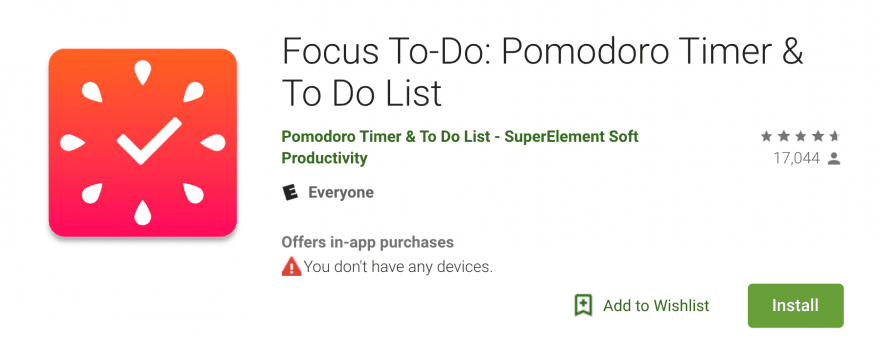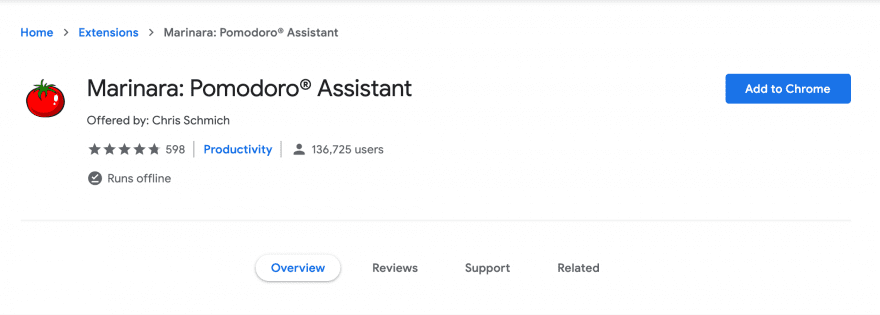Social media, gossipy co-workers, and any number of other tempting distractions can easily pull you away from your work. Plus, long hours plugging away at the same tasks can lead to boredom and inefficiency. The odds are really stacked against you when it comes to staying productive in a traditional work environment.
Fortunately, someone has found a solution. In this post, we’ll discuss what a “Pomodoro Timer” is and how it can help boost your productivity. We’ll also share tools you can use to incorporate one into your workday, and walk through a typical day of using one.
Let’s go!
An Introduction to the Pomodoro Method
In the late 1980s, Francesco Cirillo developed a time management technique he dubbed the Pomodoro Method. As a university student, Cirillo used a tomato-shaped kitchen timer to track his work, and named his system after the Italian word for tomato.
The technique is designed to help you improve your focus and productivity by alternating periods of dedicated work time with scheduled breaks. In short, the process looks like this:
- A task or tasks are chosen to be completed.
- A timer is set for 25 minutes, during which you focus solely on the task at hand.
- When the timer goes off, place a checkmark on a sheet of paper to track your session, then take a short break of three to five minutes.
- Repeat steps 2–3 until you have four checkmarks, then take a longer break of 15–30 minutes.
- Reset your checkmark count to zero, then repeat the cycle.
The purpose is to reduce distractions and minimize multitasking to make the most of your work time. A recent study shows that the excessive information thrown at us on a daily basis via social media and other technology is rapidly shortening our attention spans.
By keeping you focused on one manageable task at a time, the Pomodoro Method can help overcome this problem. Incorporating breaks also helps prevent burnout and keep you motivated. Each break becomes its own little reward for a job well done.
Tools for Incorporating a Pomodoro Timer Into Your Workday
When it comes to implementing the Pomodoro Method, there are several tools you can use. For instance, a variety of mobile apps are available that can act as a timer, while keeping track of each of your sessions. Focus Keeper for iOS, Clockwork Tomato for Android, and Focus To-Do are popular choices:

There are also several browser extensions to help you implement the Pomodoro Method. They can be especially helpful, since they prevent you from looking at your phone and potentially getting distracted. Marinara: Pomodoro Assistant is a popular option for Chrome users:

Of course, there’s nothing wrong with an actual kitchen timer and a sheet of paper if you want to kick it old school:

Just keep in mind that these things can get loud when they go off, so they might not be ideal for a crowded office environment. However, if you work from home or have a private office, having a physical object to track your time can be simple and direct.
How to Use a Pomodoro Timer to Increase Productivity (In 6 Steps)
You now probably have a good grasp on what the Pomodoro Method is and how you might implement it for yourself. However, it’s always helpful to see a technique in action. Below we’ve outlined roughly what a typical 9:00–5:00 workday might look like with a Pomodoro Timer.
Step 1: Plan Out Your Day and the Tasks You Need to Complete
Before you can jump into your first session, or “Pomodoro”, you’ll need to plan out what you need to complete for the day. This could consist of one large project with several parts, or several shorter projects. Your chosen approach will work best if you can break your assignments down into digestible chunks you could reasonably complete in 25 minutes.
For the purpose of this example, let’s assume you’ll take five minutes for each short break, and 15 minutes for your long breaks, with the exception of one 30 minute break for lunch. Under these conditions, you’ll have 14 25-minute work periods and one 15-minute work period.
Assign your tasks to specific Pomodoros so you don’t have to spend time deciding what to work on later. If you have any tasks that will take less than 25 minutes, group them together to form 25-minute sessions. This should prevent you from having to stop for a break while you’re in the middle of a task.
Step 2: Set the Timer for Your First Pomodoro
You’re now ready to begin! Set the timer of your choice – mobile app, browser extension, or bona fide tomato kitchen timer – and start on your first task. If focusing on one thing for 25 minutes is difficult for you, don’t feel discouraged. It will take time to train your brain to pay attention for so long.
If you like, you can try starting with a shorter Pomodoro and working your way up. When your work period is over, take your five-minute break. Grab a cup of coffee, refill your water bottle, stand up and stretch, or whatever else will help you put work aside for a few minutes so you can rest.
Step 3: Take Your First “Long” Break
After you’ve completed four Pomodoros, you’ve earned your first 15-minute break. This will give you time to take a lap around the office, make a quick phone call, chat with a co-worker, or even check Facebook or Instagram.
Whatever you choose to do with this time should be enjoyable and feel like a reward. You’ve probably been itching to pick up your phone, catch up on office gossip, or whatever you usually distract yourself with throughout the day. This activity can now become a motivator if you save it for your long breaks.
Step 4: Jump Back Into Your Next Pomodoro
Once your break is over, set the timer and begin again, keeping track of each Pomodoro you complete and rewarding yourself with breaks. End your second cycle with a thirty-minute break for lunch. This will give you time to disconnect from your project so you can return refreshed.
Regular breaks have been shown to increase alertness, productivity, and even creativity. Embrace your Pomodoro breaks and avoid engaging in work-related tasks when you’re supposed to be resting. This is just as important as your hyper-focused work periods. In fact, without full breaks, you’ll find it even more difficult to remain focused when you’re supposed to be working.
Step 5: Prevent, Diffuse, and Postpone Distractions
Removing distractions is key to using the Pomodoro Method. It’s probably wise to put your phone in “Do Not Disturb” mode to avoid the sound of a new notification coming in and drawing your attention. You can also use browser extensions such as StayFocused for a similar effect on your computer.
However, there are also distractions that are outside of your control – namely, your co-workers or other people around you. The Pomodoro Method requires you to practice the art of saying “no”.
Cirillo suggests the “Inform, Negotiate, Call Back” technique:
- Inform the distracting party that you’re in the middle of something at the moment.
- Negotiate and schedule a time when you can get back to them (e.g., during your next break).
- Call them back or meet up with them when your work period has ended.
Alternatively, if you break the Pomodoro and engage with your co-worker or another distraction, that work period is over – even if your 25 minutes isn’t up. This provides some motivation to avoid interruptions.
Of course, there will always be emergency situations that warrant immediate attention. You’ll have to learn how to take these in stride when they arise, then jump back into your next Pomodoro.
Step 6: Finish Out Your Day Strong
If you stick to the hypothetical Pomodoro schedule we mentioned in step one, you’ll end your day with a 15-minute work period. You might consider using this time to plan out your to do list for the next day, if you’d rather do it at the end of the day than at the beginning as we’ve outlined here.
All in all, by this point you will have completed about three and a half Pomodoro cycles. This includes over six hours of distraction-free work, and just under two hours of breaks, including a 30-minute lunch. This isn’t bad for a day’s work, and probably a healthier work-break balance than you might achieve without intentional time management in place.
Conclusion
Staying motivated and distraction free in today’s typical work environment isn’t easy. Pushing yourself through task after task while trying to avoid the temptations of various distractions can make your workday feel endless, while also making it hard to get things done.
In this post, we explored what a workday might look like if you implemented the Pomodoro Method instead:
- Plan out your day and tasks you need to complete.
- Set the timer for your first Pomodoro.
- Take your first long break.
- Jump back into your next Pomodoro.
- Prevent, diffuse, and postpone distractions.
- Finish out your day strong.
Do you have questions about using a Pomodoro Timer in your workday? Let us know in the comments section below!
Article Thumbnail Image Alexander_P / shutterstock.com









Love the Pomodoro technique, John. Thanks for reminding me about it 🙂 I have used the technique when I struggle to write. Have you got any suggestion on how I can include consuming information during the Pomodoro? I write best while reading and editing. So the information I read isn’t exactly a distracting. Any tips on the same?
Nice. I will try.
I’m in love with Pomodoro Timer since april. I subscribed Focus Booster and it’s very helpful. Now I can track how many time for each client and discover if the price I’m asking is right or should I ask more.